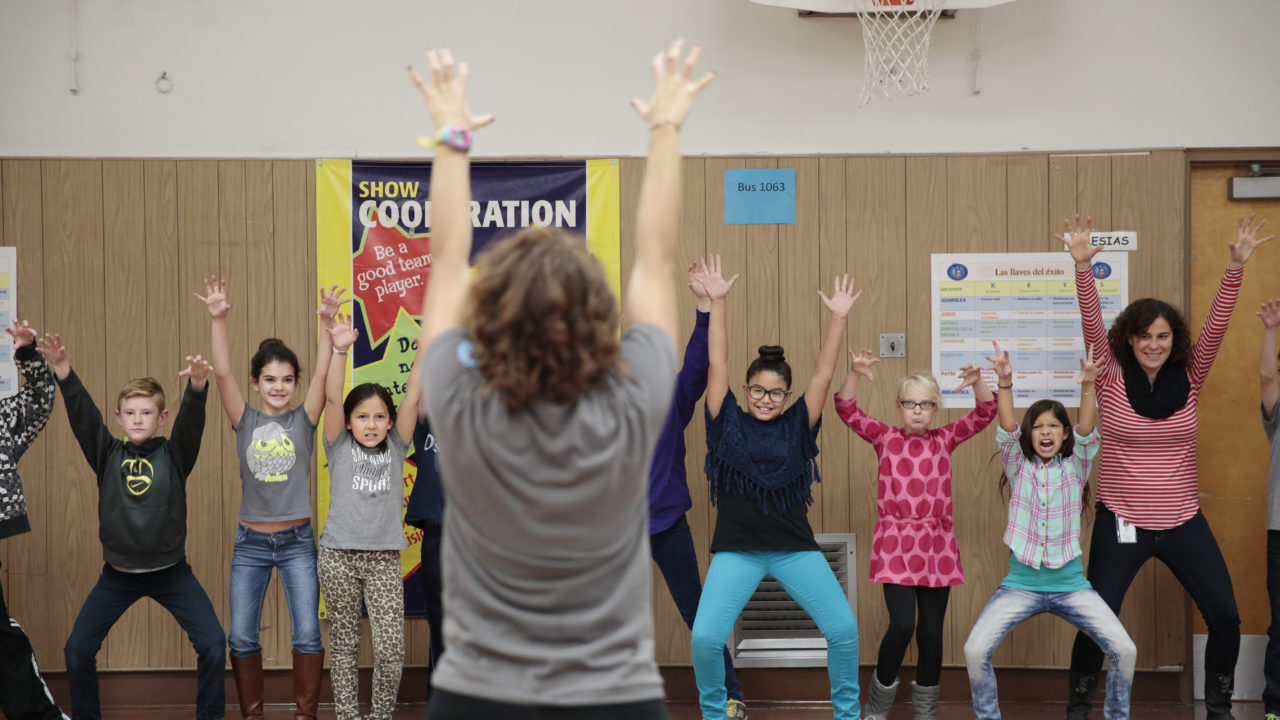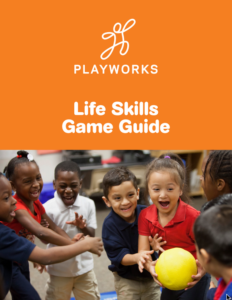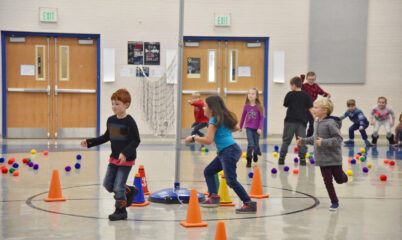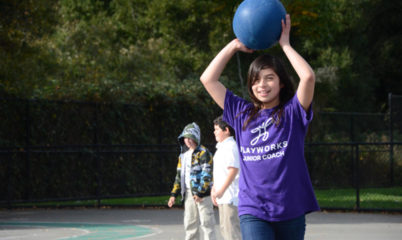It’s that time of day. Your students are restless, perhaps due to the weather. You can see their eyes glazing over as you review decimals and fractions—for the third time this week. The room is stuffy, and everyone is tired. Students move to their tables and begin their group work, when suddenly, you hear loud arguing from the corner of the room. As you move to resolve the conflict, you overhear another student complaining about school.
That’s when it hits you.
It’s time for a Brain Break!
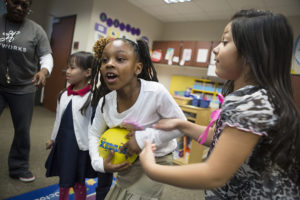
Break Breaks are simple games for the entire class, and they provide excellent opportunities to restore order to your classroom. By giving your class ownership of this small chunk of time, your students will remember why they love school. You can also use this time to reteach behavioral skills such as responsibility, respect, and conflict resolution. In addition, Brain Breaks provide a much-needed escape from the academic rigors of the day, allowing learners to return to work with renewed energy and focus.
It seems like my classroom breaks into chaos when we take a break. What can I do?
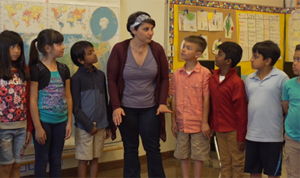 Remember that, like recess, Brain Breaks are most successful when games are presented with clear rules and boundaries. Before the class begins to play, take time to:
Remember that, like recess, Brain Breaks are most successful when games are presented with clear rules and boundaries. Before the class begins to play, take time to:
- organize the game,
- deliver a clear set of instructions, rules, and guidelines, and
- ask the class to participate in a practice round.
Then, you’re ready to play!
I need some Brain Breaks that don’t involve watching YouTube videos. Any suggestions?
 Here are 10 Brain Break games that your students will love! Once your students have learned several games, be sure to allow them to choose which ones they want to play each day. Granting students the power of choice is an effective way to reverse a power struggle, often returning order to a chaotic classroom.
Here are 10 Brain Break games that your students will love! Once your students have learned several games, be sure to allow them to choose which ones they want to play each day. Granting students the power of choice is an effective way to reverse a power struggle, often returning order to a chaotic classroom.
Grades K–1
Alligator Swamp Trail
This balancing game encourages students to use their imagination while concentrating and applying principles of good followership. Set the stage by describing an alligator swamp full of hungry gators. Students must stay in a tight line in order to avoid being eaten.
The instructor (or student leader) begins to make their way through the swamp, describing all of the animals and vegetation as they go. If a student steps out of line . . . “Chomp!” Be sure to encourage dramatic play as students visualize the alligators and quickly jump back in line. Learn more>
Zoo
In this fun animal-filled game, students will practice self-control and following directions. In order for this game to be successful, be sure to remind students of the classroom boundaries and expectations (i.e., no running, no climbing, etc.) and teach the “begin,” “freeze,” and “end” signals before you start to play.
Students get to use their imaginations as they silently pretend to be their favorite animal. When the “freeze” signal is given, participants get to make the noise of their animal three times. Then, they must wait patiently for the “begin” signal to start moving again. Encourage students to use their imaginations and pick different animals throughout the game. You can make this game more challenging by selecting a letter sound or name and encouraging the entire class to be animals whose names begin with that letter. Learn more>
Up Down Stop Go
Take a brain break and challenge your students to a few rounds of Up, Down, Stop, Go. This is a great game to refocus your students’ minds and refresh their bodies after periods of sitting at their desk. Simple commands translate into simple movements. Challenge your students minds further by having them do the opposite of your commands and see who can hang on the longest. Learn more>
Hero’s Challenge or Roshambo Challenge
As any comic book collector knows, being a fan can be even more fun than saving the world. In this game, players get to do both. Players play Rock Paper Scissors in pairs. Whoever is less successful becomes the winner’s number one fan, rooting for them as they find another player to challenge.
By the end of the game, the whole group is cheering and clapping for two finalists.
This game is a good excuse for all students to practice Rock Paper Scissors, but the real focus is teamwork. By cheering for each other, kids learn to celebrate teammates and to refocus on team goals after personal setbacks. Learn more>
Grades 2–3
Level Up
It’s a bird . . . It’s a plane . . . It’s a recess hero!
In Level Up, players unlock superpowers like strength, speed, and even flight. Students “level up” by winning a round of Rock Paper Scissors. They lose a level when they are the less successful player. For the chance to regain their superpowers, players simply play another round of Rock Paper Scissors with one of the other players at their level.
Use Level Up to introduce students to Rock Paper Scissors or remind them how to play. In a debrief, help students notice that winning or losing a round of Rock Paper Scissors was an opportunity to try something new, not the end of the fun. Learn more>
Gotcha
Focus is the name of the game! In this game, students will hone their listening skills while developing eye-hand coordination. The class sits in a circle with overlapping hands. As the instructor (or student leader) tells a story, students listen for the secret word.
When the secret word is heard, it’s “Gotcha time!” Students try to grab their neighbor’s finger with their left hand while keeping their other neighbor from grabbing their right hand. This game teaches students the importance of listening carefully and refocusing after defeat. Learn more>
Birds of Prey
Students will begin this game of cooperation and teamwork by sitting in two lines facing each other. All students are holding hands and have their eyes closed (except the line leader). The teacher (or student leader) flips a coin. If it falls on tails, nothing happens, and the instructor flips again. If it falls on heads, students pass a squeeze down the line. When the last student feels a squeeze, they jump up and race to beat the other teammate to the bandana across the room.
Through this game, students develop patience and learn the importance of cooperating with their teammates. Learn more>
Grades 4-5
Zip Zap Pop
In this sequencing game, students will develop comfort with their peers and strengthen their concentration skills. To begin, teach the students a hand gesture to go with the words “Zip,” “Zap,” and “Pop.” The leader will begin by “passing” a zip to a neighbor. The neighbor follows with a “zap,” and passes it to another player. The last player provides the “pop.” If a player hesitates, they must leave the circle and try to distract the other players. Learn more>
Name Touch
Knowing each other’s names builds community, and what better way to memorize names than through a tag game? In this fast-paced game, students form a circle with one student leader in the middle. The student leader calls a peer’s name—and the race is on! The person whose name was called must call another peer’s name before they get tagged! Make this game more inclusive by encouraging boys to call girl’s names, and vice versa. Students will have a ball building community, learning names, and making new friends. Learn more>
This is My Nose
This game of concentration will stump your students and keep them wanting more. In this game, students begin in a circle with one student leader in the middle. The student leader walks up (or points) to a peer in the circle and points to his elbow while saying, “This is my nose.” The other student must do the exact opposite (point to his nose while saying, “This is my elbow.”).
The student leader then moves on to another participant and selects different body parts to misname. When a player makes a mistake, they move to the middle and replace the student leader. This fun game provides a much-needed break from academic rigor and will make your students laugh while they practice concentration skills. Learn more>
Find 156 fun games in our newest Game Guide.
Includes everything from games you can play in a small space with no materials, to games you can play in a big group during recess. Search for games by age level, time/space/materials available, and by the life skills used (like problem solving or teamwork).
